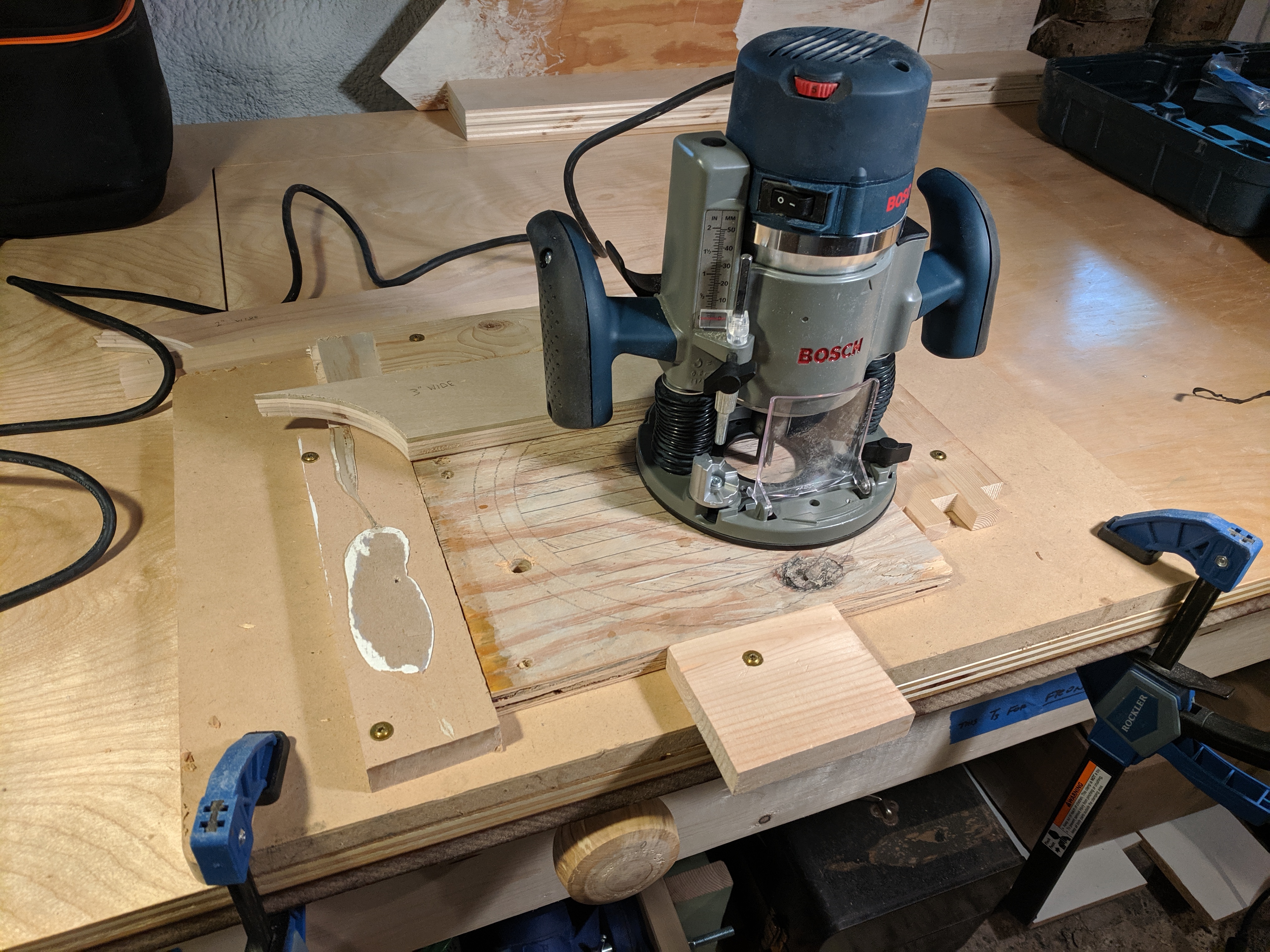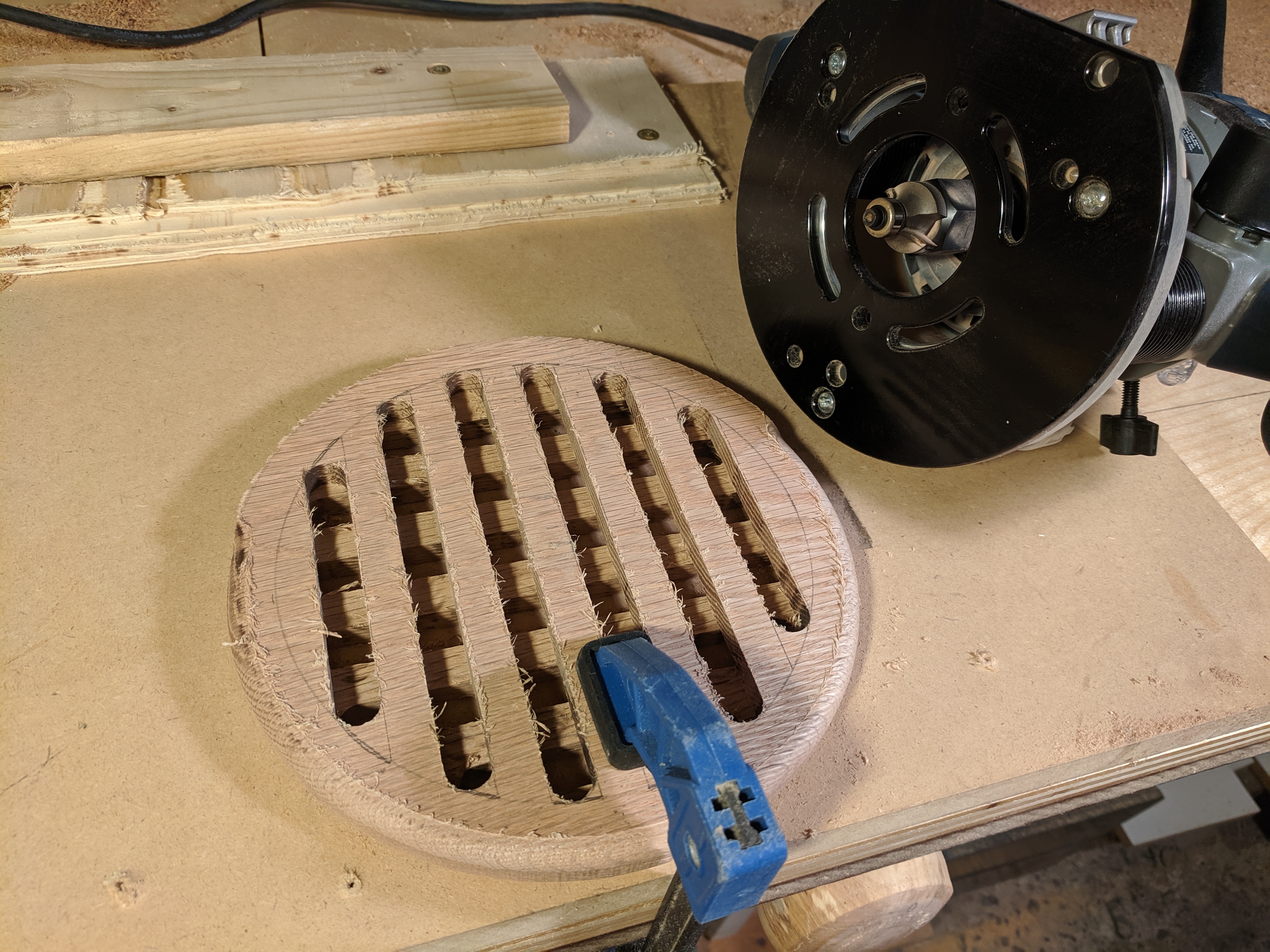First router project. My family had a trivet like this when I was growing up, and I wanted to recreate it. Made from a scrap end of an oak board.

One of the channels on the bottom has a little deviation but otherwise they came out pretty much straight. And there's a fair amount of burning on the sides. I was moving very slowly at full depth, so I wouldn't have to try to get to the exact same endpoint multiple times at different depths. Curious if that's a likely source of burn and what a better way would be; it's not really a problem on the oak but would be on lighter wood (and I have an ash scrap waiting to be v2).
I started with a practice on a plywood scrap.

The jig mostly just holds it in place, with a fence along the back and 1", 2" and 3" spacers (then flip it around to work in from the other side).

For the real thing, I cut it out first on a bandsaw circle jig. That left a pinhole in the center, still slightly visible after a sawdust + glue patch, but it's on the bottom. Placing a channel in the center could avoid that.

After all the criss-cross cuts (routes?) I used a 1/4" roundover. The set of the bandsaw left the outside a little rough, so I'd probably smooth that out before doing the roundover next time.

Finally, 80 + 150 + 200 with the orbital sander (just holding the trivet in my hand to do the edge and rounded corner), and butcher block finish.
In one of his videos on the Antikythera mechanism, Clickspring approximated a spiral as a series of offset circular arcs using a trammel and scorper. He makes soul achingly beautiful machining videos, go watch them.
I think I just invented a relatively simple router jig to lay out and cut a spiral/scroll. Imagine a circle cutting jig, but the router is held in a track. The pivot is anchored so it doesn't turn, and the arm/track circles around it. The router is pulled in/pushed out by an acme screw that runs through the pivot, and the nut it rides in is turned by a bevel gear from the pivot. So as you push the router around its orbit, that action turns the lead screw. That should get you a constant rate spiral, and you could adjust the pitch by adjusting the ratio of the bevel gears.
Or do the "wind a string around a drum" technique but I don't like the idea of doing that with a ROUTER.